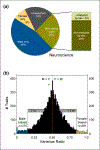Inclusion of females does not increase variability in rodent research studies
- PMID: 30560152
- PMCID: PMC6294461
- DOI: 10.1016/j.cobeha.2018.06.016
Inclusion of females does not increase variability in rodent research studies
Abstract
The underrepresentation of female subjects in animal research has gained attention in recent years, and new NIH guidelines aim to address this problem early, at the grant proposal stage. Many researchers believe that use of females will hamper research because of the need for increased sample sizes, and increased costs. Here I review empirical research across multiple rodent species and traits that demonstrates that females are not more variable than males, and that for most traits, female estrous cyclicity need not be considered. I present statistical simulations illustrating how factorial designs can reduce the need for additional research subjects, and discuss cultural issues around the inclusion of male and female subjects in research.
Keywords: Sex; female; male; sex differences; sexual dimorphism; variability; variance.
Figures


References
-
- Sorge RE, Mapplebeck JCS, Rosen S, Beggs S, Taves S, Alexander JK, Martin LJ, Austin JS, Sotocinal SG, Chen D, et al.: Different immune cells mediate mechanical pain hypersensitivity in male and female mice. Nat Neurosci 2015, 18:1081–1083. **Prime example of a fundamental sex difference in a basic biological process discovered because this research group studies both males and females. - PMC - PubMed
-
- Heinrich J: Most drugs withdrawn in recent years had greater health risks for women. Gen Account Off-01–286R 2001,
-
- Klein SL, Schiebinger L, Stefanick ML, Cahill L, Danska J, de Vries GJ, Kibbe MR, McCarthy MM, Mogil JS, Woodruff TK, et al.: Opinion: Sex inclusion in basic research drives discovery. Proc Natl Acad Sci 2015, doi:10.1073/pnas.1502843112. - DOI - PMC - PubMed
